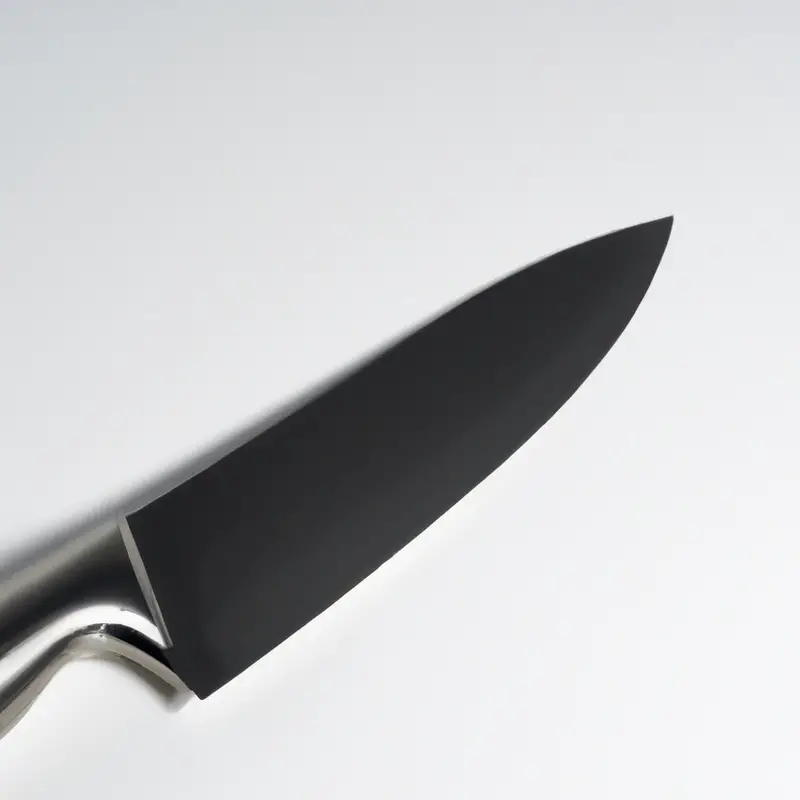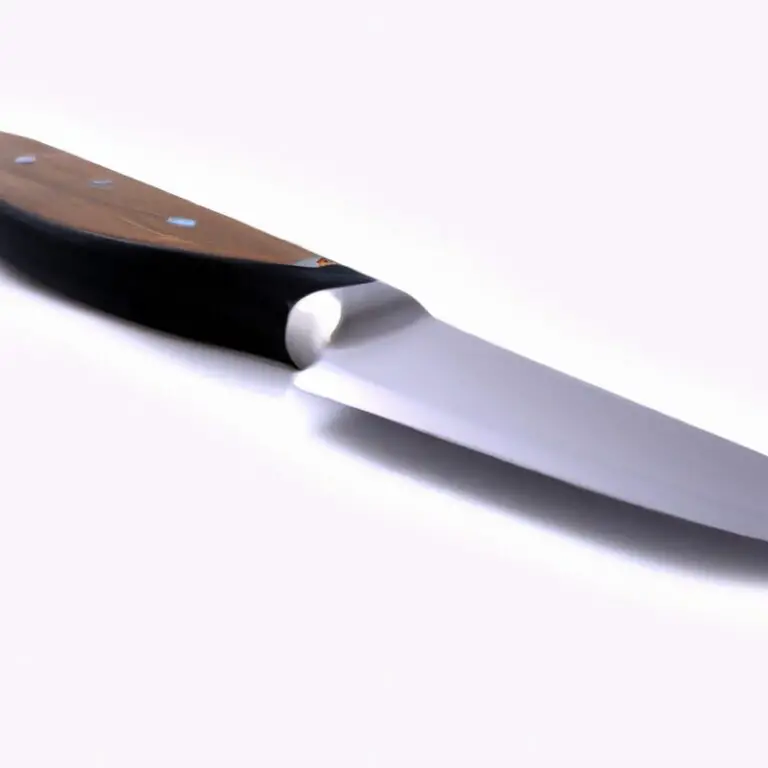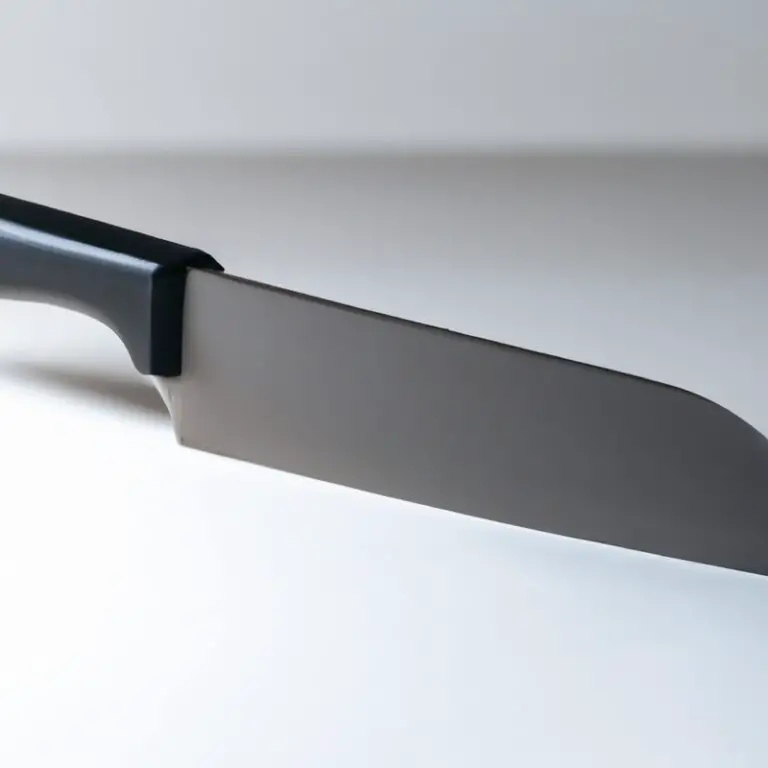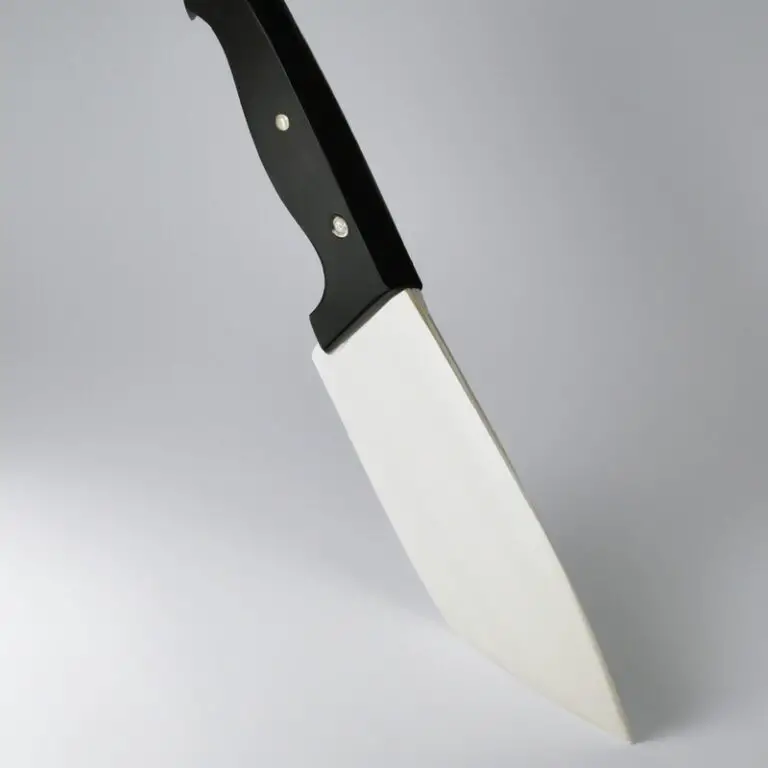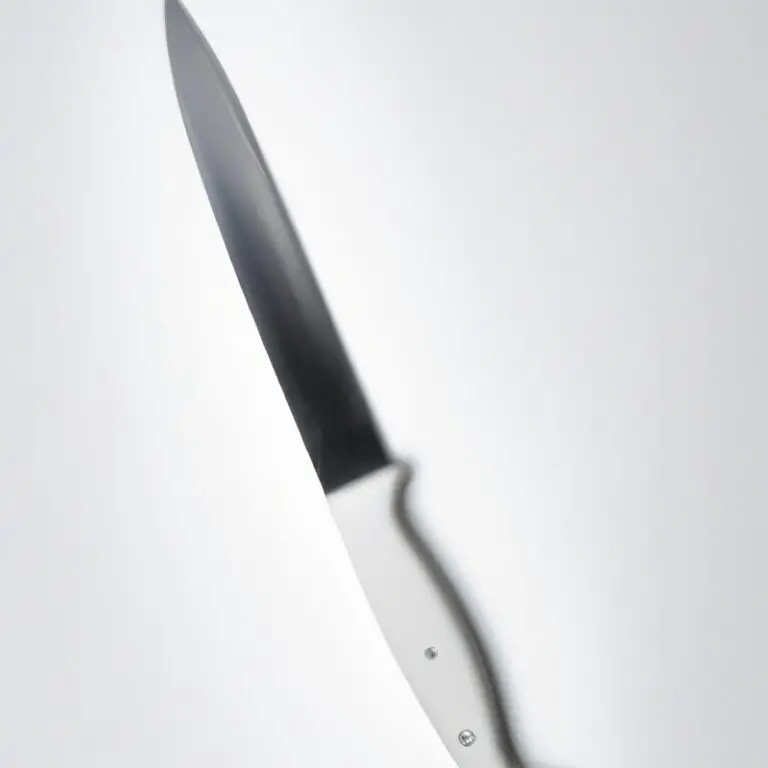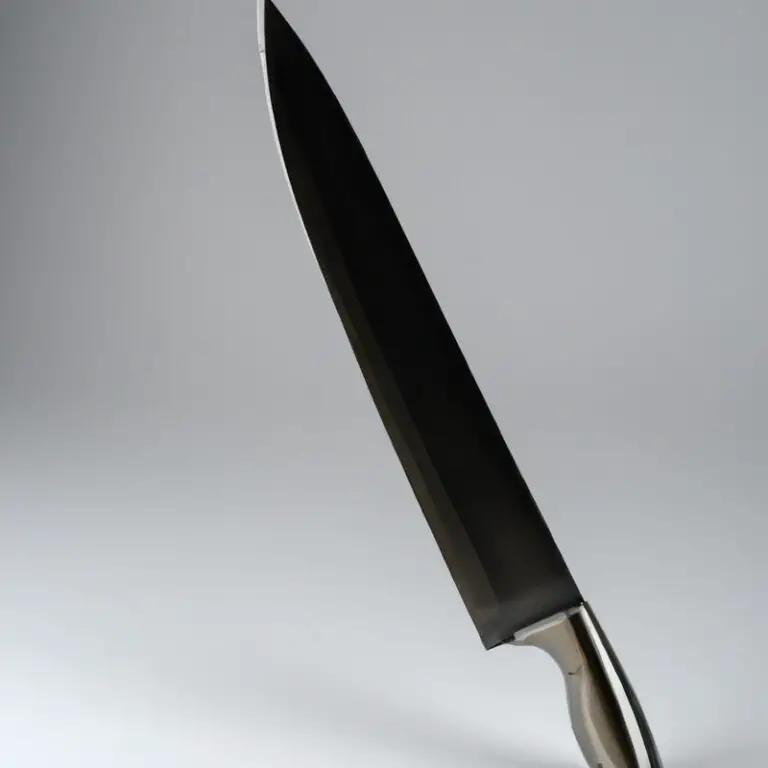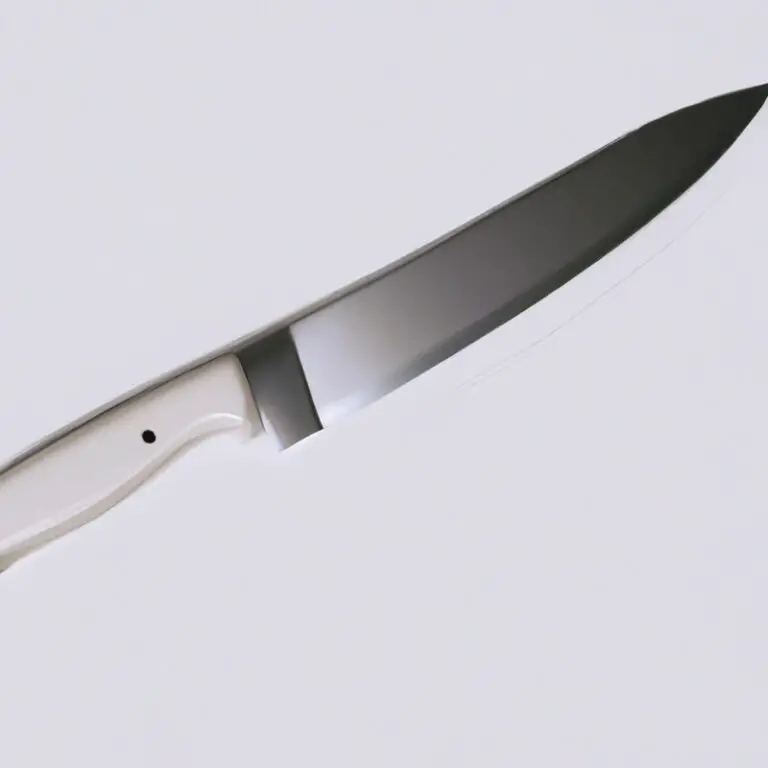How To Improve Knife Skills With a Chef Knife?
Key Takeaways:
- Knife skills are essential to cooking, and improving them with a chef knife can greatly enhance your culinary abilities.
- Choose a high-quality chef knife that feels comfortable in your hand and practice proper grip and technique to ensure safe and efficient cutting.
- Focus on consistency and precision, using slicing, chopping, and rocking motions to produce clean and even cuts.
- Regular practice and honing of your chef knife can help maintain its sharpness and improve your knife skills over time.
Have you ever watched a professional chef effortlessly slice through vegetables like it’s a walk in the park? Do you find yourself constantly struggling to chop ingredients in your kitchen?
Don’t worry; you’re not alone.
Knife skills can be a pain to master, but with the right tools and techniques, you can elevate your cooking game to the next level. In this article, we’re going to delve into the art of using a chef knife to improve your knife skills.
From learning the anatomy of the blade to practicing essential techniques, we’ll provide you with practical tips and tricks to take your chopping skills to the next level.
| Technique | Description |
|---|---|
| Pinch Grip | Hold the handle of the chef knife with your dominant hand and pinch the top of the blade with your thumb and index finger. |
| Rocking Motion | Use a rocking motion to slice through herbs and vegetables, keeping the tip of the blade on the cutting board. |
| Chopping | Hold the food with your non-dominant hand and use a quick chopping motion to cut through fruits and vegetables. |
| Julienne | Cut thin matchstick-like pieces of vegetables by slicing them lengthwise and then making cuts perpendicular to the first slices. |
| Battonet | Cut rectangular pieces of vegetables by first cutting them into thin slices and then cutting them into sticks of equal length. |
| Slicing Meat | Hold the meat with your non-dominant hand and slice through it with one smooth motion, keeping the blade at a slight angle. |
Understanding the Anatomy of a Chef Knife for Better Knife Skills
To improve your knife skills with a chef knife, it’s important to understand its anatomy. A chef knife consists of a blade, handle, bolster, and tang.
The blade is the cutting edge of the knife and can be straight or curved.
The handle is where you grip the knife, and the bolster is the metal band between the blade and handle that adds weight and balance to the knife. The tang is the part of the blade that extends into the handle.
When holding a chef knife, it’s important to grip the handle firmly with all five fingers wrapped around it.
The thumb and index finger should grip the blade where it meets the handle for better control. The position of your fingers on the handle can affect the balance of the knife, so experiment with different grips to find what works best for you.
Understanding the anatomy of a chef knife can also help you choose the right knife for the job.
A chef knife is a versatile tool that can handle a range of tasks, but there are specialty knives for specific tasks like boning, filleting, and slicing. Knowing which knife to use can help you work more efficiently and get better results.
Overall, understanding the anatomy of a chef knife can improve your knife skills and make you a more confident and efficient cook in the kitchen.
Grip and Hand Placement: Key Principles for Improving Knife Skills
Proper grip and hand placement are essential for improving knife skills. The way you hold the knife affects the amount of control you have, and ultimately, the accuracy of your cuts.
The grip should be firm but not too tight, allowing you to have control of the knife.
The thumb and index finger should grip the blade while the other fingers should be curled around the handle. The grip should be comfortable and natural.
Hand placement is equally important.
The hand holding the food should be curled into a claw to keep fingers out of the way and ensure safety. The hand holding the knife should be placed towards the back of the blade, with the thumb and index finger on opposite sides of the blade for balance.
It’s crucial to remember to keep your fingers tucked in and away from the blade at all times to avoid injury.
Practicing proper grip and hand placement will not only improve your knife skills but also ensure safety in the kitchen.
Honing vs. Sharpening a Chef Knife: How to Properly Maintain Your Blade
Honing and sharpening are two different methods to maintain the quality of your chef knife’s blade. Honing straightens the edge of your knife, while sharpening grinds away the dull steel to create a new edge.
You should hone your knife regularly (every 2-3 uses) to retain its sharpness.
Sharpening, on the other hand, is only necessary when your knife has lost its sharpness due to regular use or damage. The frequency of sharpening varies depending on how often you use your knife.
It is advisable to sharpen your knife professionally or use a sharpening stone to achieve the desired sharpness.
Remember to keep your hands away from the blade while maintaining your knife to avoid accidental injury. By following these tips, you can maintain the quality and longevity of your chef knife effectively.
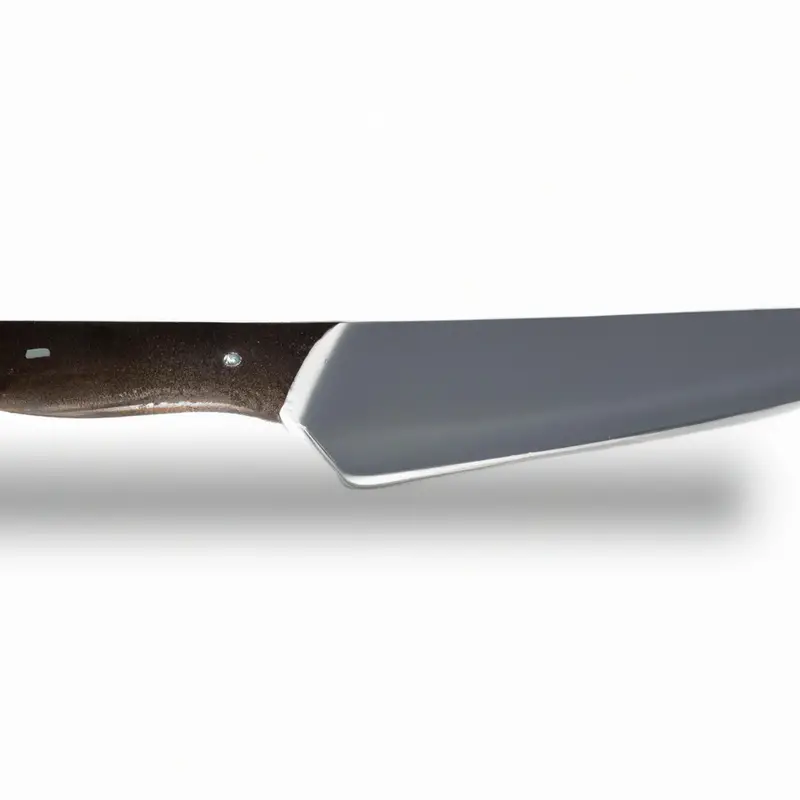
Mastering the Rock Chop Technique: An Essential Knife Skill for Any Cook
The rock chop technique is a fundamental knife skill every cook should master. It’s all about using a rocking motion with your wrist as you chop back and forth, allowing you to cut through ingredients like herbs, nuts, and vegetables with ease.
To master this technique, start by ensuring your knife is sharp.
Dull knives make it harder to control the blade, increasing the risk of injury. Then, grip the handle with your dominant hand, and place your other hand on the top of the blade for stability.
As you chop, keep the tip of the blade on the cutting board, and use a back and forth rocking motion with your wrist.
This allows for a faster and more efficient chopping process, and ensures even, uniform cuts. Practice this technique regularly to build muscle memory and improve your speed and accuracy in the kitchen.
With time, you’ll find yourself chopping ingredients effortlessly, making meal prep much more enjoyable.
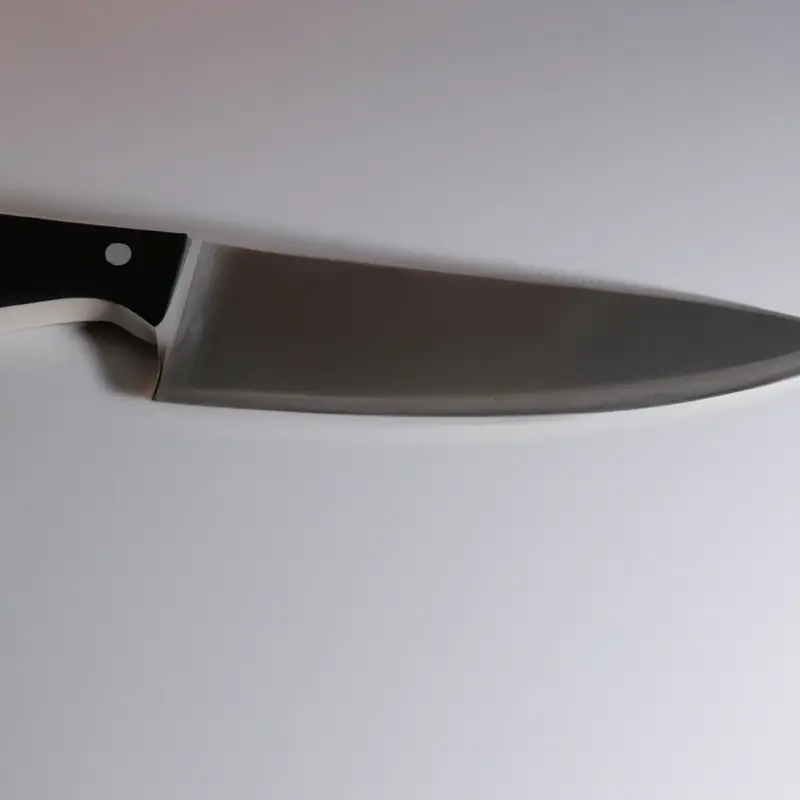
Slicing and Dicing: How to Chop Vegetables Like a Pro
Slicing and dicing vegetables can be daunting, but with some practice and proper technique, anyone can chop like a pro. Here are some tips to help you improve your vegetable prep skills:
- Use a sharp chef knife: A dull knife can crush vegetables instead of slicing them cleanly. Make sure to sharpen your knife regularly to ensure a clean cut.
- Practice the Claw grip: To prevent cutting yourself, use the “claw grip” technique to hold the vegetable while slicing. Curl your fingers under and tuck your fingertips under your knuckles, using your knuckles as a guide for the blade.
- Use a steady cutting board: A slippery cutting board can be dangerous and difficult to work with. Make sure to use a sturdy cutting board that won’t shift around as you chop.
- Cut vegetables into even sizes: For even cooking, it’s important to cut vegetables into uniform sizes. Cut the ends off the vegetable, then slice it in half or quarters before chopping into small pieces.
- Master the Rock Chop: The “rock chop” technique involves using a see-saw motion with the knife, using the tip of the blade to control the movement. Keep your fingertips curled in the claw grip position and use your other hand to steady the vegetable as you chop.
With practice and patience, anyone can improve their vegetable chopping skills and enjoy preparing fresh, healthy meals at home.
Cutting Meat with Precision: Tips for Breaking Down Poultry, Beef, and Pork
To cut meat with precision, it’s important to have a sharp chef knife and to understand the different cuts of meat. When it comes to poultry, first, remove any excess fat or skin and then identify the joints to separate them.
For beef, know the difference between the different cuts, such as ribeye, sirloin, and tenderloin.
When cutting pork, remove the skin and any excess fat before identifying the different parts, such as the shoulder, loin, and belly. Use a sawing motion to cut through the meat, and let the knife’s weight do the work.
It’s essential to maintain a consistent angle and avoid hacking at the meat.
With practice and knowledge of the different cuts of meat, cutting with precision will become second nature.
The Importance of a Sharp Blade: How to Test and Measure Your Knife’s Edge
A sharp knife is a fundamental tool in any kitchen, making your food prep easier, safer, and more efficient. To test your knife’s sharpness, you can perform a paper test letting the blade glide through the paper with ease.
Another method is to slice through a soft tomato effortlessly without squishing it.
A dull blade can cause hand fatigue, accidents, uneven cuts and ruin the overall appearance of your dish. A good sharpening routine extends the life of the knife, improves your precision and speed, and ensures that your food is sliced with accuracy, which enhances the tastes and textures.
Experts suggest sharpening your blade before each use for optimal results; alternatively, honing your knife regularly with a honing steel or rod can help maintain the sharpness of the knife.
In summary, blade maintenance is essential to enable your chef’s knife to perform its full potential.
Knife Safety: Avoiding Cuts and Nicks in the Kitchen
Knife Safety: Avoiding Cuts and Nicks in the Kitchen It’s essential to prioritize knife safety while handling sharp chef knives in the kitchen. Here are some tips to keep in mind:
- Always use a sharp knife: Dull knives can slip off food, leading to injuries. Keep your knives sharp and honed to avoid accidents.
- Use the right knife for the task: Each chef knife is specifically made for a purpose. Don’t use a bread knife for slicing meat or a paring knife for heavy-duty chopping.
- Keep your workspace clean: Remove any clutter or objects from your workspace that may interfere with your knife strokes.
- Use the proper grip and hand placement: Hold the knife with your dominant hand and grasp the food item with your non-dominant hand, using a claw-like shape to prevent any accidental cuts.
- Keep your fingers and thumb away from the knife’s edge: Using a proper grip and hand placement ensures that your fingers do not come in contact with the knife’s sharp edge.
- Avoid distractions: Stay alert and focused while using a knife and avoid multitasking to prevent injuries.
Remember, knife safety is crucial to improving your knife skills. By following proper safety techniques, you will enhance your skills, save time, and prevent accidents.
Practice Makes Perfect: Drills and Exercises to Improve Your Knife Skills
To improve your knife skills, it is essential to practice regularly and perform drills and exercises that strengthen your technique and precision. Simple exercises such as cutting onions into uniform slices or dicing potatoes into consistent cubes can help develop your skills.
Other drills include cutting through paper or plastic wrap without tearing it, slicing through a tomato skin without squishing it, or mincing herbs finely without bruising them.
Additionally, practicing different chopping techniques, such as the rock chop or tap chop, can also improve your skills. Consistent practice and patience are key to mastering knife skills.
Remember to always prioritize safety by using a sharp knife and keeping your fingers away from the blade.
Recipe and Technique Applications: How Knife Skills Impact the Taste and Texture of Your Meals
Knife skills not only improve the efficiency of your cooking but also have a significant impact on the taste and texture of your meals. Precisely chopping vegetables, slicing meat, and mincing herbs have a direct effect on the way they cook and taste.
For example, unevenly chopped vegetables can result in some pieces being overcooked and others undercooked.
This inconsistency can also affect the flavor and texture of the dish. Similarly, unevenly sliced meat can result in some pieces being tough, while others are tender.
With better knife skills, you can achieve consistency and uniformity in your ingredients, enhancing the overall quality of your dish.
Therefore, it is essential to invest time and effort in improving your knife skills to elevate your culinary skills and create delicious meals.
Final Verdict
Mastering your chef knife skills is an essential step to elevating your cooking game. Understanding the anatomy of your blade, honing vs.
sharpening techniques, grip and hand placement, and proper cutting techniques are all crucial elements to perfecting your skills.
Remember to prioritize safety and use caution when handling sharp objects in the kitchen. With patience, practice, and persistence, you can become a knife-wielding pro in no time.
So, sharpen those blades, grab some fresh ingredients, and get ready to create culinary masterpieces that will impress even the toughest critics.
Trust me, your taste buds will thank you.

